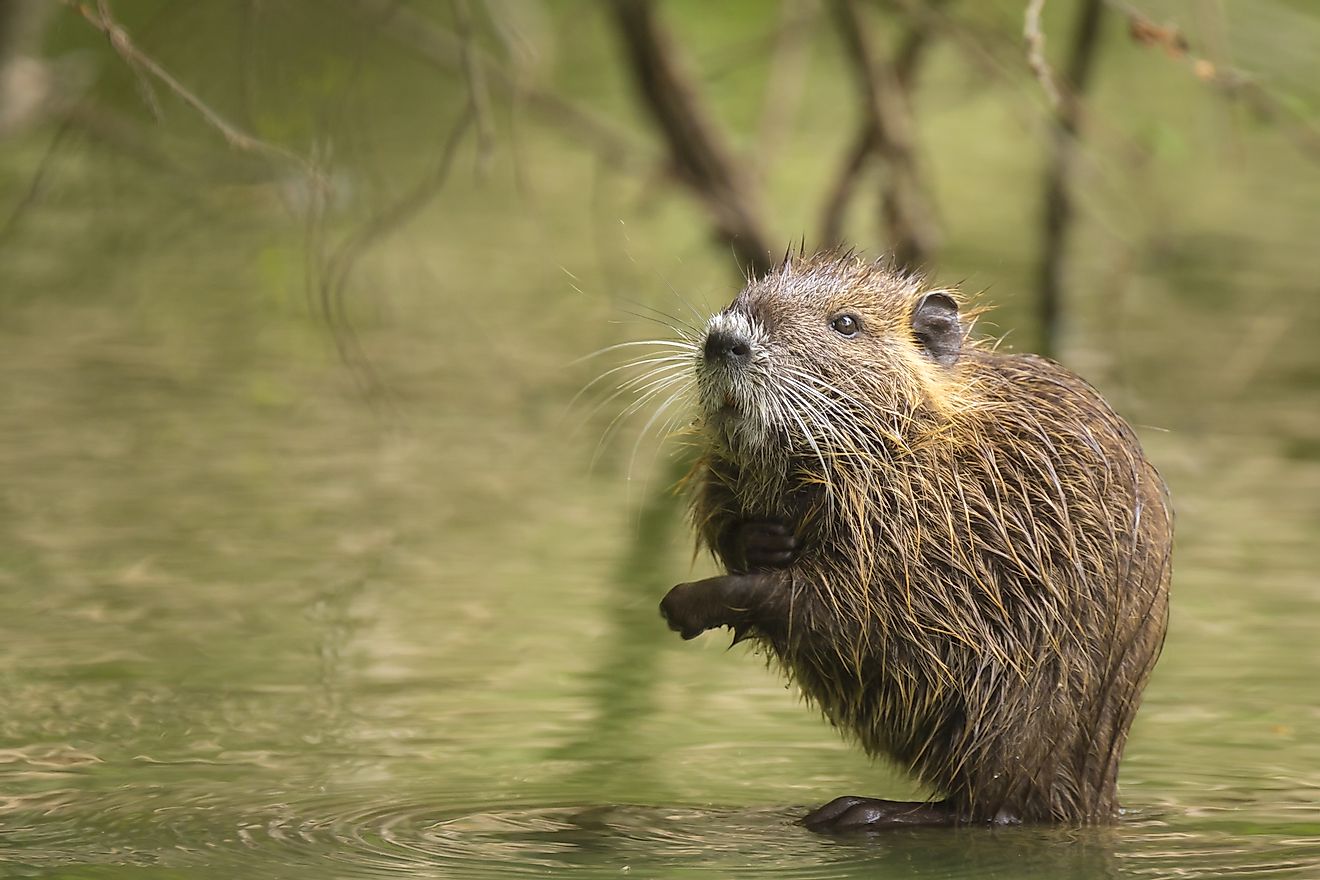Muskrat Facts - North American Animals

What Are Muskrats?
Muskrats (Ondatra zibethicus) are native to North America, and the only species in the Genus Ondatra, which in turn is the only genus in the Tribe Ondatrini. Muskrats are the largest members of the Family Cricetidae in the superfamily Muroidea of the Order Rodentia. Due to their “musky” odor, rat-like appearance, and the word “Muskrat” being a close homonym to their species name in Algonquin languages, they were bestowed with the English common name they still carry today. Muskrats’ binomial name, meanwhile, comes from a neo-Latinization of the native Wyandot name for the animal (ondathra) into the Ondatra genus name, and the species name zibethicus coming from the Latin word describing the “musky scent” from “civet” animals in the Order Carnivore. Adult muskrats generally have a body length of around a foot in length from head to rump, a tail that is similarly about a foot long, and a body weight of around 3 pounds. Despite their dense, compact forms, muskrats have beady eyes and short ears akin to those of smaller rodents. While many muskrats are characterized by a dark mahogany fur and a tawny underbelly, they can in fact be a range of colors, from jet black to albino with pink eyes. Muskrat fur has long been prized by fashionistas and those who source and sell them alike, and individuals trapping and hunting muskrats often find them to be easy animals to track. They not only leave distinctive footprints as they travel across wet ground, but also leave an even more distinguishing track line in the sand and over-ground as their long tails drag across the ground.
What Muskrats Eat (And What Likes to Eat Them)
Muskrats consume an almost purely vegetarian diet, showing a special inclination towards munching on cattails and other aquatic vegetation. During very cold weather and other times of food scarcity, however, they will at times consume aquatic and amphibious animals as well, especially small fish, shellfish, and frogs. Due to their large populations and wide diaspora, muskrats are important food sources to many other animals as well. All manner of meat-loving animals, including large fish, birds of prey, reptiles, and wild Felines and Canines alike, consume muskrats on a regular basis. Additionally, muskrat meat and fur has long been utilized by Native American peoples.
Muskrat Environments
Due to their quick growth and the quality of their furs, commercial muskrat farming became popular over time, and the animals were introduced for such purposes in many areas outside of their natural ranges, often with the unwanted consequence of disrupting the environs they made their new homes within. Today, muskrats live not only in Canada and the U.S., but in Albania, Argentina, Austria, Belarus, Belgium, Bulgaria, Chile, the Czech Republic, Estonia, Finland, France, Germany, Gibraltar, Hungary, Italy, Japan, Latvia, Lithuania, Mexico, Moldova, Mongolia, the Netherlands, Poland, Romania, the Russian Federation, Slovakia, Slovenia, Sweden, Switzerland, and the Ukraine as well. In many of these locales, they are considered an invasive species, and treated as pests. As wetlands are degraded by climate change, human development and construction, and chemical runoff and other pollutants, the proliferation of muskrats therein threatens to deplete many wetlands’ resources across much of the Northern Hemisphere. Muskrats’ burrowing activities, in particular, often worsen riverbank erosion, and they are poisoned in many places as mere nuisances. This is especially problematic in areas of Europe, Asia, and South America where they have become an invasive species. The problem is worsened by the scarcity of natural predators of rodents in these areas due to overhunting. With that said, with their ability to adapt to just about any clime where water is present, their large and frequent litter sizes, and the diverse range of muskrats’ diets, these rodents are unlikely to have their populations threatened with destabilization anytime soon.
Life in the Wetlands
Muskrats have a number of adaptations that allow them to thrive in aquatic environments, and can survive remaining submerged for almost 20 minutes at a time and surviving. Despite the fact that their paddle-like feet would appear to be ideal for swimming, most of muskrats’ underwater propulsive powers are sourced from their tails. Like other aquatic mammals, they are less sensitive to high levels of carbon dioxide building up in their bloodstream, part of why they are able to endure such long periods without fresh air. Muskrats also have incisors that remain outside of their mouths even when closed, allowing them to gnaw underwater while holding their breath. Muskrats often live together as a ‘nuclear family’, consisting of a mother, her mate, and their young, though these are usually near other families in local muskrat communities. They build a house, called a lodge, that is dome-shaped made out of nearby vegetation and mud. Muskrats stay more spread out in open water areas but, in thriving cattail ponds, as many as 40 may live within one acre of wetland space. The average lifespan is 1-3 years in the wild, however, it can live up to 10 years in captivity.
Multiplying Like Muskrats
Muskrats typically breed from early spring until late summer, with the lion’s share of young being born between April and June. Gestation lasts around 4 weeks, and babies are hairless and tiny, weighing less than an ounce at birth. Mothers have between three and six young per litter, and have two or three litters annually. Muskrats can swim by the age of three weeks, and are normally weaned about a week after this time. Males have essentially no role in rearing the young, and mothers do so almost entirely on their own. Despite having a very stable population across their natural range, local populations experience massive fluctuations from season to season, generally experiencing a dramatic rise and subsequent sharp decline in population in a cyclical pattern wherein each cycle lasts about ten years. Across their natural range, there are very few places where muskrats’ populations are considered “at risk."







